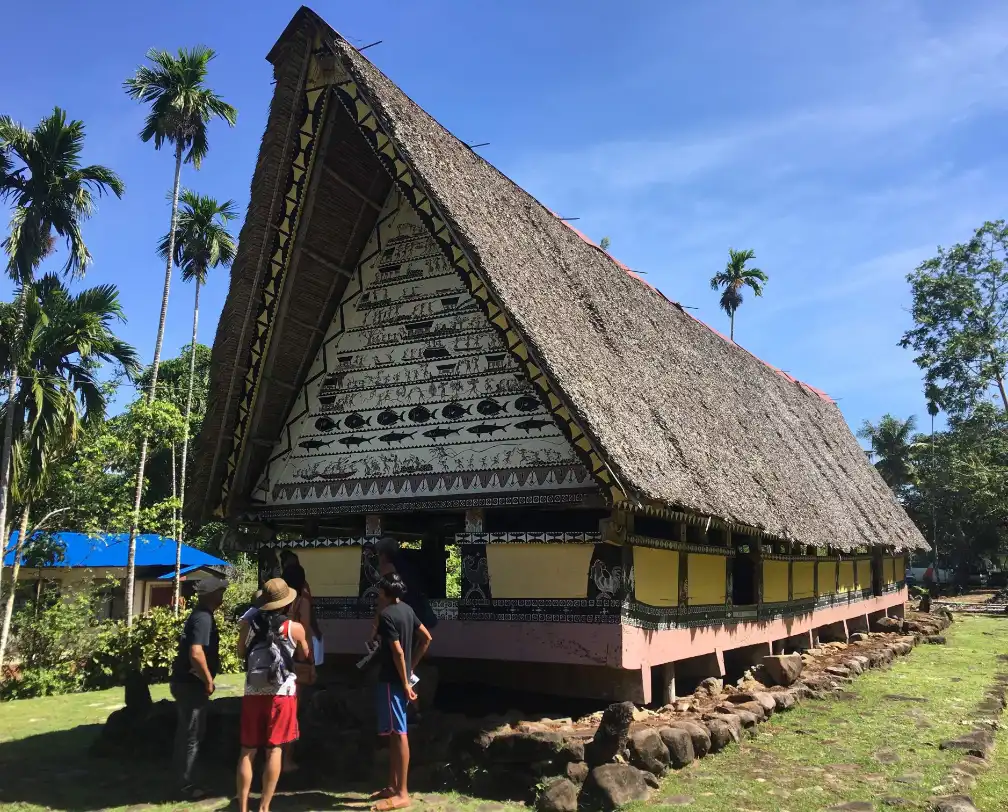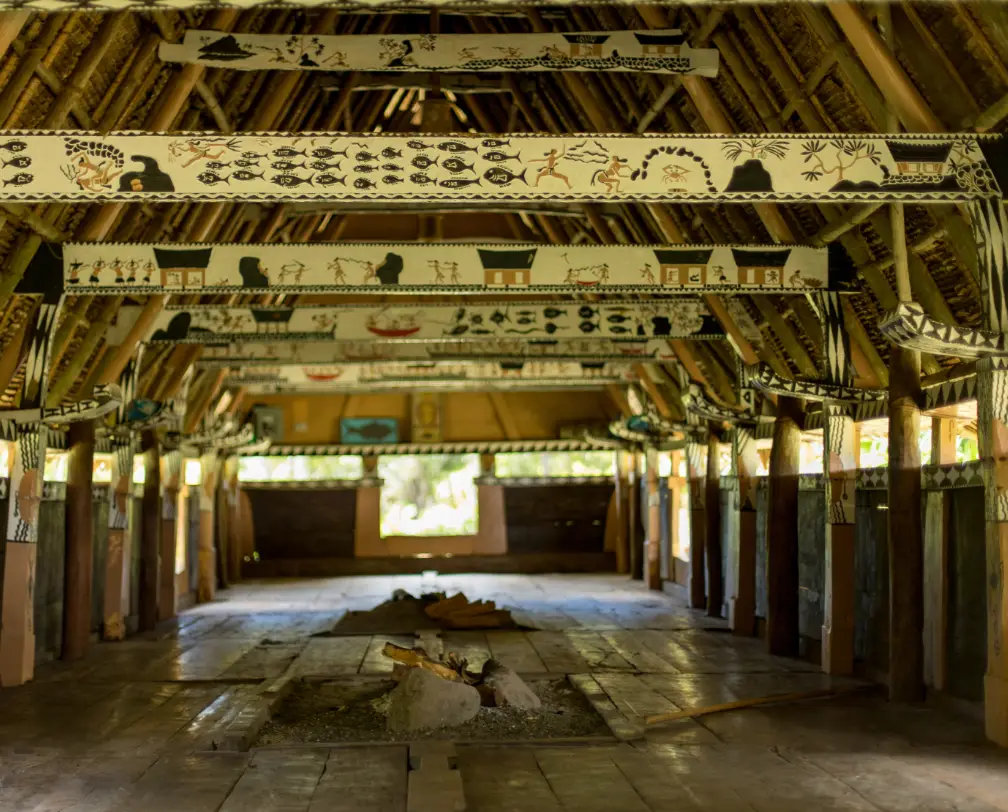The Palauan Bai, or the men's house, is a cultural institution that has played a significant role in the history and development of Palauan society. As a traditional gathering place and community center, the Bai has served various functions, such as a venue for religious ceremonies, a place for community meetings, and a center for teaching traditional skills and crafts to younger generations. In this article, we will explore the history, significance, structure, functions, and cultural context of the Palauan Bai.
History of the Bai
The Palauan Bai has a long and rich history that dates back to ancient times. In the past, the Bai was used primarily as a place for men to gather and socialize, but over time, it evolved into a multi-purpose building that served various functions. The Bai became a center for religious ceremonies, including weddings, funerals, and coming-of-age rituals. It also served as a meeting place for community leaders to discuss important issues and make decisions that affected the community.
The construction of the Palauan Bai was a significant undertaking, requiring the participation of the entire community. The Bai was typically built using traditional materials such as wood, thatch, and bamboo. The pillars supporting the Bai were often carved with intricate designs that symbolized Palauan culture and beliefs. The roof was made of thatch and was supported by rafters made of wood or bamboo.
The Palauan Bai also played a crucial role in the preservation of Palauan culture and traditions. It served as a center for teaching traditional skills and crafts to younger generations, such as boat-building, fishing, and weaving. The Bai was also a place where Palauan stories, legends, and myths were shared and passed down from generation to generation.

Significance of the Bai
The Palauan Bai is a symbol of Palauan cultural identity and represents the values of community, respect, and tradition. It is considered a sacred place and is treated with great reverence by the Palauan people. The Bai is also a testament to Palau's rich cultural heritage, which has been shaped by centuries of tradition and influences from neighboring cultures. The Palauan Bai is an essential part of Palauan society, and its significance extends beyond its architectural and cultural significance. It serves as a center for community activities and plays a crucial role in the social and economic development of Palau. The Bai is a place where people can come together to celebrate their shared history, traditions, and values.
Structure of the Bai
The Palauan Bai is typically a large, open-air structure that is built using traditional materials such as wood, thatch, and bamboo. It is usually rectangular in shape and features a high roof supported by pillars. The Bai may also have various carvings and decorations that symbolize Palauan culture and beliefs. Inside, the Bai may have a central open area for gatherings and meetings, as well as smaller rooms for specific purposes.
The Palauan Bai's structure reflects the traditional Palauan way of life and values. The open-air design of the Bai allows for natural ventilation, which is essential in Palau's hot and humid climate. The pillars that support the Bai are often carved with intricate designs that symbolize Palauan culture and beliefs. The thatched roof is made of woven palm leaves and provides shade from the sun while allowing for air circulation.
The Palauan Bai's interior is also designed to accommodate a range of activities. The central open area is typically used for large gatherings and ceremonies, such as weddings and funerals. The smaller rooms may be used for specific purposes, such as storage or as sleeping quarters for guests.

Function of the Bai
The Palauan Bai serves various functions in the Palauan society, such as a venue for traditional ceremonies, including weddings, funerals, and coming-of-age rituals. It is also used as a meeting place for community leaders to discuss important issues and make decisions that affect the community. Additionally, the Bai is a place for Palauan men to gather and socialize, and it serves as a center for teaching traditional skills and crafts to younger generations. In modern times, the Palauan Bai remains a vital part of Palauan society. The Bai continues to serve as a community center, a gathering place for traditional ceremonies, and a symbol of Palauan cultural identity. Despite the challenges presented by modernization and globalization, the Palauan Bai remains an essential institution that continues to play a crucial role in preserving Palauan culture and traditions.
The Palauan Bai is a unique cultural institution that has evolved over centuries to become an essential part of Palauan society. Its history, significance, structure, and functions are all intertwined with Palauan culture and traditions, reflecting the values and beliefs of the Palauan people. As such, the Palauan Bai is not just a physical structure but a living embodiment of Palauan culture and heritage.
The Palauan Bai has also faced challenges in modern times, as Palauan society has become more urbanized and globalized. However, the Bai continues to play a vital role in preserving Palauan culture and traditions, providing a place for the Palauan people to come together to celebrate their shared history and values.
Furthermore, the Palauan Bai has also become a symbol of Palau's unique identity in the world, attracting visitors from all over the world who are interested in learning about Palauan culture and heritage. The Bai has become a popular tourist destination, allowing visitors to experience firsthand the rich cultural traditions of Palau.
In conclusion, the Palauan Bai is a significant cultural institution that holds great historical and cultural significance in Palauan society. Its continued importance in modern times is a testament to the resilience and adaptability of Palauan culture and traditions. As such, the Palauan Bai must be preserved and celebrated as a living embodiment of Palauan culture and heritage.

